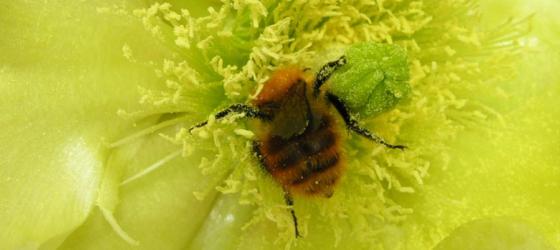Project LIFE STOPVESPA
Impact of the invasive yellow-legged hornet Vespa velutina on natural communities and ecosystems
------
------
------
------

Hanbury Botanical Gardens takes part in the wild bees monitoring network set up by the University of Turin, Department of Agricultural, Forest and Food Science (DISAFA), under the project LIFE STOPVESPA (LIFE14 NAT/IT/001128) (www.vespavelutina.eu).
Aim of the project is the spatial containment of the Yellow-legged hornet (Vespa velutina Lepeletier 1836) in Italy and the establishment of an early warning and rapid response system to cope with this invasive alien species. V. velutina is the first species of Vespa accidentally introduced into Europe from Asia. It causes multiple threats, however the extent of the impacts produced has not yet been quantified and documented appropriately. One of the planned actions is to assess the impact of V. velutina on wild bee communities and the pollination services they provide.
Plant reproduction depends on pollination and most of wild and cultivated plants need insect pollination to produce good amounts of seeds. Among the pollinating insects honey bees (Apis mellifera L.) and native wild bee species are the most effective pollination agents. The researchers found 944 wild bee species in Italy, but probably there are more than 1000 species and this makes Italy as one of the major wild bee biodiversity hotspots of Europe.
DISAFA therefore established a monitoring network in areas where V. velutina is present or not; in these areas the pollinating insect community is sampled at regular intervals. Hanbury Botanical Gardens is one the sampled areas. We expect that the flowering species diversity present in the Hanbury Botanical Gardens could sustain a characteristic wild bee community. The survey activities in the Hanbury Botanical Gardens started in 2016 and at moment lead us to identify 43 wild bee morpho-species; the study will be carried on the next years.
